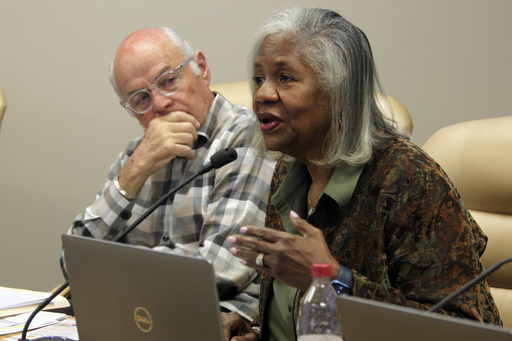
WASHINGTON — Former President Donald Trump is aiming to secure Kansas and its six electoral votes for the third time in a row on November 5. He faces Vice President Kamala Harris in a contest where Harris must overcome significant challenges in a state that has not supported a Democratic presidential candidate in six decades.
Currently, the Republican Party maintains control of both U.S. Senate seats and three of the four congressional seats in Kansas. Although neither Senate seat is contested this year, three incumbent representatives will be running for reelection. The 2nd Congressional District seat is vacant following Rep. Jake LaTurner’s announcement of retirement earlier this year.
Despite the dominance of Republican presidential candidates in Kansas, there have been several Democratic victories in gubernatorial races over the years, including two-term Governor Laura Kelly, who will not be on the ballot this election cycle.
In his previous campaigns, Trump received approximately 56% of the vote in 2020 and 57% in 2016, winning nearly every county.
In the Kansas state Legislature, Republicans significantly outnumber Democrats in both the state Senate and House, giving them the power to override any potential vetoes from Kelly. However, Democrats have a chance to weaken the GOP supermajority by flipping a handful of seats in either chamber. All 40 state Senate seats and 125 state House seats are up for grabs in the upcoming November elections.
Voters will also participate in several races for the State Board of Education. Among these, three involve open seats, while two Democratic incumbents will be trying to retain their positions. In District 2, Democrat Melanie Haas faces Republican Fred Postlewait, while Democrat Betty Arnold is challenged by Republican Jason Carmichael for a new term.
The outcome of the races will not be predicated on projections; winners will only be declared once it’s clear that no other scenarios would allow trailing candidates to potentially close the gap. Until a race is called, ongoing coverage will highlight relevant newsworthy developments, including any candidate concessions or declarations of victory, while clarifying that no winner has been officially declared yet.
Here’s what to anticipate as the 2024 election approaches in Kansas:
Election Day is set for November 5, with polls closing between 8 p.m. and 9 p.m. ET. Since Kansas spans two time zones, most of the state will begin reporting results while some voters in western counties are still casting their ballots until 7 p.m. MT (9 p.m. ET).
For the presidential race, six electoral votes will be awarded to the statewide winner. The key contenders include President Trump (R), Vice President Harris (D), Chase Oliver (Libertarian), and Robert F. Kennedy Jr. (independent). There will also be notable races for the U.S. House, state Senate, state House, and state Board of Education.
In the past presidential elections, Trump secured 56% of the votes in 2020, while his opponent, Joe Biden, garnered 42%. This race was officially called on November 3, 2020, at 9:59 p.m. ET.
Regarding voter registration and turnout, there are 1,994,621 registered voters in Kansas as of September 2024. Approximately 26% are Democrats, 45% are Republicans, and around 28% are unaffiliated voters. The voter turnout during the 2020 presidential election was 71% of registered voters, with about 61% of total votes cast before Election Day in 2020, and 40% in 2022.
Vote counting is expected to be efficient, with initial results reported on November 3, 2020, at 8:07 p.m. ET. By midnight ET, approximately 87% of the total votes had already been reported.
Overall, as Kansas heads toward another critical election, the dynamics between the parties, candidate performances, and voter engagement will play pivotal roles in determining the outcome.
